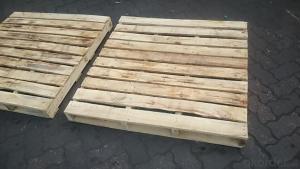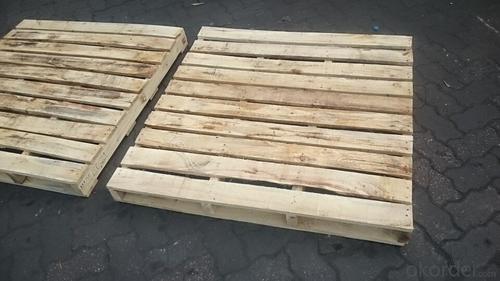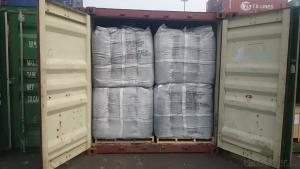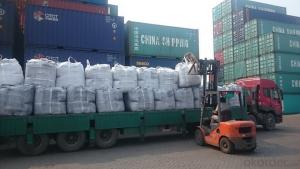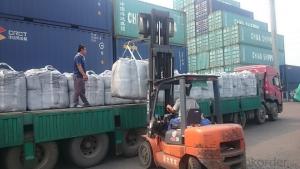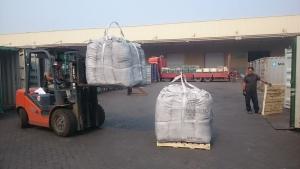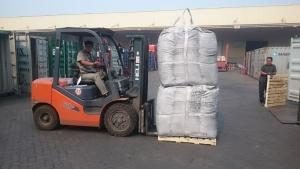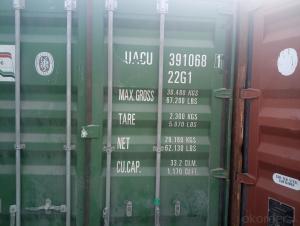Used in EAF as Charge Coke for Steel Plants with VM 1.5%max
- Loading Port:
- Tianjin
- Payment Terms:
- TT OR LC
- Min Order Qty:
- 21 m.t.
- Supply Capability:
- 6000 m.t./month
OKorder Service Pledge
OKorder Financial Service
You Might Also Like
Introduction:
Calcined anthracite can be called carbon additive, carbon raiser, recarburizer, injection coke, charging coke, gas calcined anthracite.
Carbon Additive/Calcined Anthracite Coal may substitute massively refinery coke or graphite. Meanwhile its cost is much less than the refinery coke and graphite. Carbon Additive is mainly used in electric steel ovens, water filtering, rust removal in shipbuilding and production of carbon material.
It has good characteristics with low ash, low resistivity, low sulphur, high carbon and high density. It is the best material for high quality carbon products. It is used as carbon additive in steel industry or fuel.
Features:
Best quality Taixi anthracite as raw materials through high temperature calcined at 800-1200 ℃ by the DC electric calciner with results in eliminating the moisture and volatile matter from Anthracite efficiently, improving the density and the electric conductivity and strengthening the mechanical strength and anti-oxidation, It has good characteristics with low ash, low resistivity, low carbon and high density. It is the best material for high quality carbon products, it is used as carbon additive in steel industry or fuel.
Specifications:
F.C.% | 95MIN | 94MIN | 93MIN | 92MIN | 90MIN | 85MIN | 84MIN |
ASH % | 4MAX | 5MAX | 6 MAX | 6.5MAX | 8.5MAX | 12MAX | 13MAX |
V.M.% | 1 MAX | 1MAX | 1.0MAX | 1.5MAX | 1.5MAX | 3 MAX | 3 MAX |
SULFUR % | 0.3MAX | 0.3MAX | 0.3MAX | 0.35MAX | 0.35MAX | 0.5MAX | 0.5MAX |
MOISTURE % | 0.5MAX | 0.5MAX | 0.5MAX | 0.5MAX | 0.5MAX | 1MAX | 1MAX |
Pictures
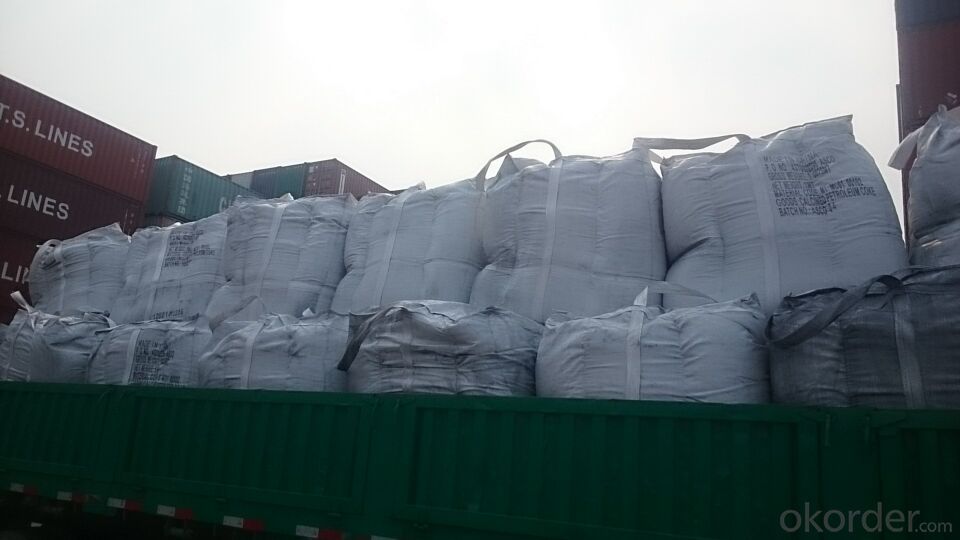
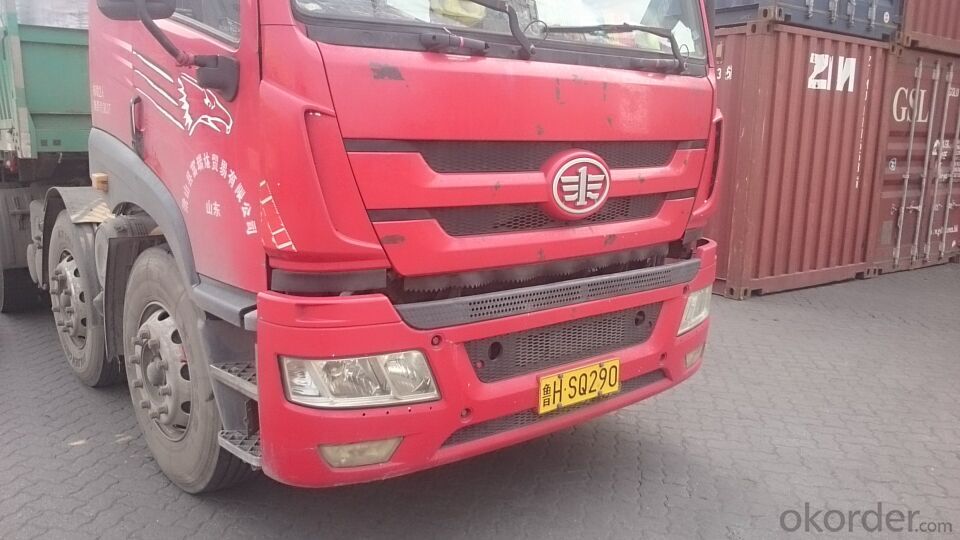
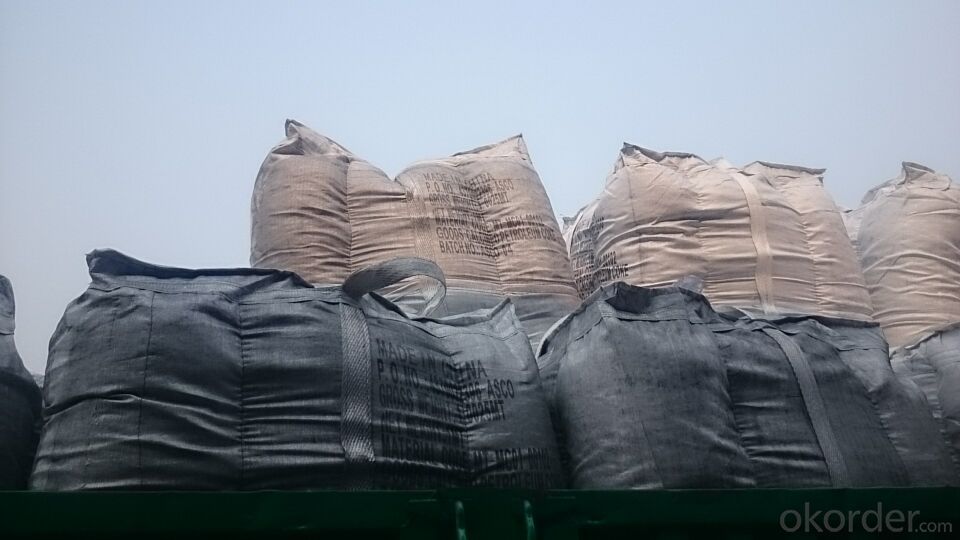
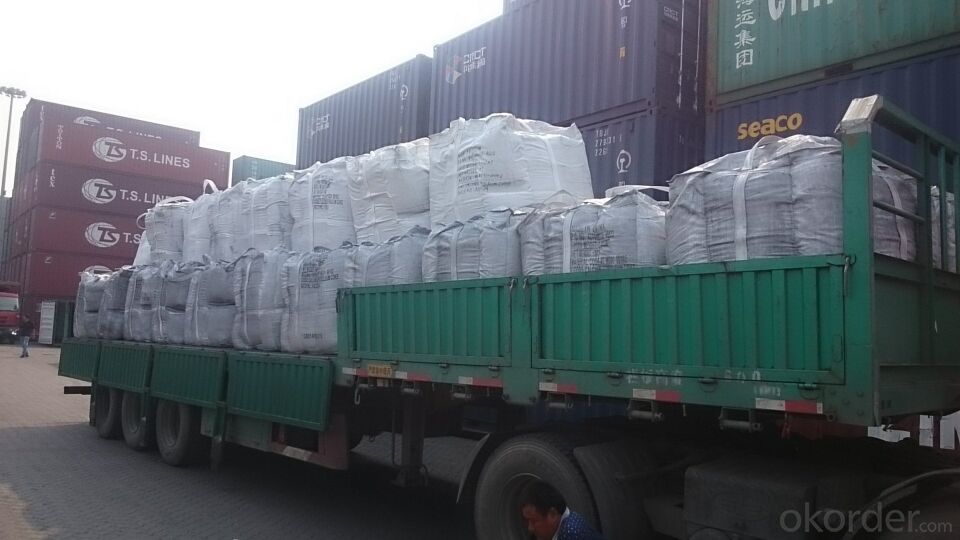
FAQ:
Packing:
(1). Waterproof jumbo bags: 800kgs~1100kgs/ bag according to different grain sizes;
(2). Waterproof PP woven bags / Paper bags: 5kg / 7.5kg / 12.5kg / 20kg / 25kg / 30kg / 50kg small bags;
(3). Small bags into jumbo bags: waterproof PP woven bags / paper bags in 800kg ~1100kg jumbo bags.
Payment terms
20% down payment and 80% against copy of B/L.
Workable LC at sight,
- Q: Want advanced reinforcement, but I do not know where the high furnace rock carbon, looking for someone to guide...
- Before the mall has sold, now you can see
- Q: What are the effects of carbon emissions on agriculture?
- Agriculture is significantly harmed by carbon emissions, with various negative effects. Firstly, the presence of higher levels of carbon dioxide (CO2) in the atmosphere contributes to global warming, resulting in changes in rainfall patterns and more frequent occurrences of extreme weather events like droughts, floods, and heatwaves. These weather conditions disrupt agricultural production by reducing crop yields, damaging crops, and increasing the prevalence of pests and diseases. Higher temperatures also accelerate evaporation, which leads to soil moisture deficits and water scarcity. This has a detrimental impact on crop growth and productivity. Additionally, elevated CO2 levels can modify the nutritional composition of crops, reducing their quality and nutritional value. Research has demonstrated that increased CO2 concentrations can decrease the protein content in wheat and rice, potentially causing health issues for those who heavily rely on these staple crops. Moreover, carbon emissions contribute to the formation of ground-level ozone, a harmful air pollutant. Ozone damages plant cells, inhibits photosynthesis, and reduces crop yields. It particularly affects sensitive crops such as soybeans, wheat, and cotton. The consequences of carbon emissions on agriculture extend beyond crop production. Livestock farming is also affected, as rising temperatures and water scarcity make it more difficult to maintain adequate grazing lands and provide sufficient water and fodder for animals. Furthermore, changes in climate patterns can facilitate the spread of livestock diseases and pests, posing additional risks to the livestock industry. In conclusion, carbon emissions have far-reaching effects on agriculture, resulting in decreased crop yields, diminished nutritional value, challenges in livestock farming, and increased vulnerability to pests, diseases, and extreme weather events. It is crucial to address and mitigate carbon emissions to safeguard global food security and ensure the sustainability of agricultural systems.
- Q: Why carbon 14 can be used to measure the age of matter?
- Libby believes that when plants alive, because continue to carry out photosynthesis, carbon dioxide (including carbon 12 and carbon 14) continue to enter the plant, plant eaten animal, carbon 14 and entering into the body of the animal. The animals and plants 14 carbon content but is constantly changing, Once the plant or animal died, the plant will not absorb carbon dioxide in the atmosphere, the animal will no longer eat plants.
- Q: What are the challenges of carbon capture and storage technology?
- Carbon capture and storage (CCS) technology shows promise as a solution for reducing greenhouse gas emissions and combating climate change. Nevertheless, there are various obstacles that must be overcome in order for it to be widely adopted and effective. One of the primary hurdles associated with CCS technology is its considerable cost. The implementation of CCS necessitates significant investments in infrastructure, equipment, and operations, making it economically burdensome. Additionally, the capture process itself requires substantial amounts of energy, resulting in increased costs and potentially limiting its feasibility. Another challenge pertains to the limited capacity for storage. Identifying suitable underground sites for storing the captured carbon dioxide (CO2) is crucial, but can be difficult due to geological limitations. The task of identifying and evaluating suitable sites with adequate storage capacity is complex and necessitates meticulous planning. Furthermore, concerns exist regarding the long-term stability and integrity of the storage sites. Leakage of stored CO2 could compromise the effectiveness of CCS and pose environmental risks. Ensuring the secure and safe storage of captured carbon is essential to prevent any adverse impacts on ecosystems and public health. Transporting the captured CO2 from the capture sites to the storage facilities also presents a challenge. Establishing an efficient and extensive transportation infrastructure is necessary for the widespread implementation of CCS technology. Developing pipelines or other means of transportation capable of handling the volume of captured CO2 and ensuring its secure transport over long distances is crucial. Public acceptance and social factors also significantly impact the challenges associated with CCS technology. Local communities may have concerns and objections regarding potential risks associated with the capture, transport, and storage of CO2. Effectively addressing these concerns through transparent communication and engagement with stakeholders is vital for garnering public support and minimizing opposition. In conclusion, carbon capture and storage technology has the potential to greatly reduce greenhouse gas emissions. However, its challenges, including high costs, limited storage capacity, integrity concerns, transportation infrastructure, and public acceptance, must be addressed to ensure successful implementation and make a significant contribution to mitigating climate change.
- Q: How do you use carbon fourteen to measure the age?
- Then, carbon - 14 dating method is to determine the remains of ancient age? Originally, cosmic rays can produce radioactive carbon -- 14 in the atmosphere, and can enter all living tissue carbon dioxide and oxygen - synthesis combined, first for the absorption of plants, after the animal into a plant or animal. As long as they live. Continuous absorption of carbon - 14, to maintain a certain level in the body. When the organism dies, which will stop breathing carbon - 14, within their organization, with a half-life of 14 carbon began 5730 years of decay and gradually disappear. For any carbon containing material, as long as the determination of the remaining 14 of the content of radioactive carbon you can, that the age of 14. Carbon dating method is divided into conventional carbon - 14 dating method and carbon - 14 accelerator mass spectrometry dating two. At that time, since it is invented by Libby conventional carbon - 14 dating method, this 1950. The technology and application of methods have significant progress in the world, but its limitations are obvious, namely the time measurement must use a large number of samples and longer. Thus, carbon - 14 dating accelerator mass spectrometry technology developed. Carbon - 14 accelerator mass spectrometry dating method has unique advantages.
- Q: How do you remove the carbon stains on your clothes?
- Can choose 120 solvent xylene, gasoline, alcohol or alcohol xylene soap, gently scrub, to color stain oil in removed and low temperature soaping. Remove paint stains difficult. The new pollution paint stains to timely, with a small brush dipped in banana water (thinner) or four carbon chloride benzene, gasoline, and other organic solvents, gently scrub fabric, and then use the low temperature washing, rinse can be. The old paint stains, first with 120 solvent gasoline soaked, the stain of the fabric and the combination of loose, banana water, benzene 46 family washing and ironing guide removal. If the white cotton polyester fabric. Stains are larger paint stains, can use low concentration of caustic soda liquid soap, soap boiling temperature, also can achieve the ideal effect. The removal ratio of lye soap is 5000 grams of water plus 100 grams of caustic soda, half soap (dissolved after heating temperature 80 to 90 DEG C), i.e. Can be.
- Q: What are the different forms of carbon?
- Carbon exists in several different forms, known as allotropes. The most common forms of carbon include diamond, graphite, and amorphous carbon. Diamond is the hardest known natural substance and consists of carbon atoms arranged in a crystal lattice structure. It has a high refractive index and is often used in jewelry due to its brilliance and clarity. Graphite, on the other hand, has a layered structure where carbon atoms are arranged in sheets. It is a soft and slippery material, commonly used in pencils and lubricants. Graphite is also a good conductor of electricity, making it suitable for applications in batteries and electrodes. Amorphous carbon refers to a group of carbon materials that lack a well-defined crystal structure. Examples of amorphous carbon include charcoal, soot, and activated carbon. These forms of carbon have diverse applications, such as in water and air purification, as well as in the manufacturing of electrodes and pigments. Other forms of carbon exist as well, such as fullerenes and carbon nanotubes, which have unique properties and are extensively studied for their potential applications in various fields, including nanotechnology and electronics. In summary, carbon can take on different forms depending on its atomic arrangement, resulting in a range of materials with distinct physical and chemical properties. These forms of carbon find applications in various industries and are vital for our everyday lives.
- Q: What role does carbon play in photosynthesis?
- The role of carbon in photosynthesis is crucial because it serves as the primary element utilized by plants to generate organic compounds. In the process of photosynthesis, plants absorb carbon dioxide from the atmosphere and employ it to synthesize glucose, a simple sugar that acts as a foundational component for more intricate carbohydrates like starch and cellulose. This entire process takes place within the chloroplasts of plant cells, specifically in the stroma of the chloroplast. It is in this location that the enzyme RuBisCO facilitates the fixation of carbon dioxide into an organic molecule called PGA (phosphoglycerate). By means of a series of reactions referred to as the Calvin cycle, PGA is transformed into glucose, which can be either stored as energy or utilized for growth and reproduction. To sum up, carbon is indispensable to photosynthesis since it supplies the necessary raw material for plants to self-generate their own sustenance and maintain life.
- Q: What is the most common isotope of carbon?
- The most common isotope of carbon is carbon-12. It is called carbon-12 because it has an atomic mass of 12 atomic mass units, which is determined by the number of protons and neutrons in its nucleus. Carbon-12 is abundant in nature, making up approximately 98.9% of all carbon atoms. The other two isotopes of carbon, carbon-13 and carbon-14, are less common and exist in much smaller proportions. Carbon-12 is stable and does not undergo radioactive decay, which makes it an essential element for life on Earth.
- Q: How can carbon be stored underground?
- Carbon capture and storage (CCS) is a process that allows for the underground storage of carbon. This process involves the capture of carbon dioxide (CO2) emissions from industrial sources, such as power plants or cement factories, followed by the storage of the captured CO2 deep underground in geological formations. To begin, the CO2 emissions are captured before they are released into the atmosphere. Various technologies, such as post-combustion capture, pre-combustion capture, and oxy-fuel combustion, are available for this purpose. These technologies separate the CO2 from other gases, like nitrogen, resulting in a concentrated stream of CO2 that is easy to store. Once the CO2 is captured, it must be transported to a suitable storage site. Depending on the distance and location of the storage site, transportation can be done through pipelines or ships. The CO2 is then injected deep underground into geological formations, including depleted oil and gas reservoirs, saline aquifers, or coal seams. The selection of storage sites is done carefully, taking into consideration their ability to safely and permanently store the CO2. The chosen geological formations must have an impermeable rock layer, known as a caprock, to prevent CO2 leakage to the surface. Regular monitoring of the storage sites ensures that the stored CO2 remains securely underground. The storage of carbon underground has significant benefits in reducing CO2 emissions and addressing climate change. It effectively prevents the release of CO2 into the atmosphere, where it contributes to the greenhouse effect and global warming. Additionally, CCS can be combined with enhanced oil recovery (EOR) techniques, using the injected CO2 to extract more oil from depleted reservoirs, making the process economically viable. However, it is important to note that carbon storage is not a permanent solution to climate change. While it can help in reducing emissions during the transition to cleaner energy sources, it should not replace efforts to decarbonize the economy and reduce dependence on fossil fuels. Moreover, the long-term safety and environmental impacts of underground carbon storage need thorough examination to ensure its effectiveness and sustainability.
Send your message to us
Used in EAF as Charge Coke for Steel Plants with VM 1.5%max
- Loading Port:
- Tianjin
- Payment Terms:
- TT OR LC
- Min Order Qty:
- 21 m.t.
- Supply Capability:
- 6000 m.t./month
OKorder Service Pledge
OKorder Financial Service
Similar products
Hot products
Hot Searches
